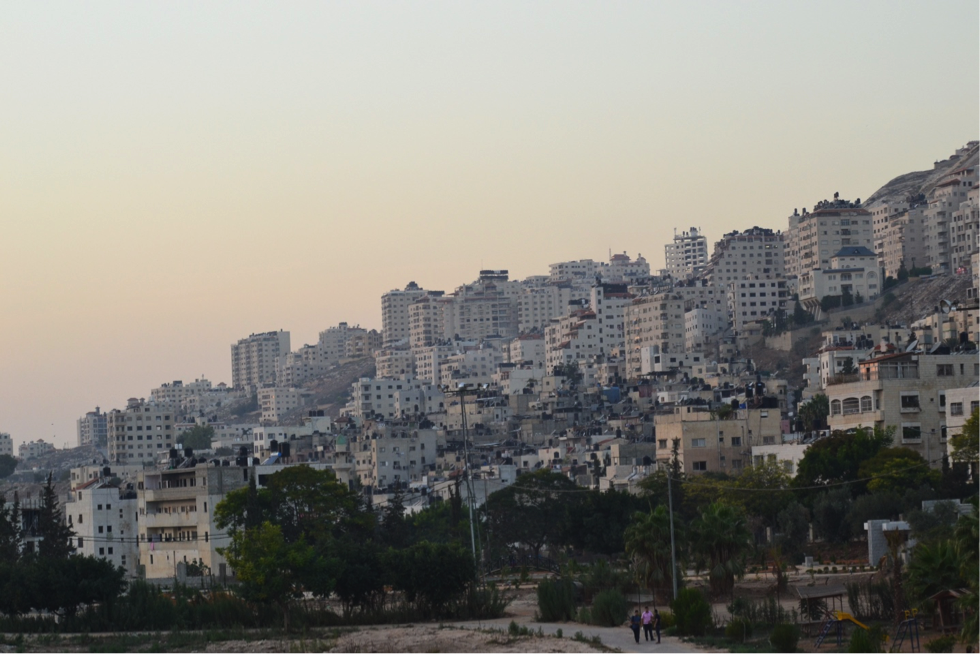PeB Journal | Analysis, Conflict Resolution, General, International Politics, Middle East and North Africa, Nationalism, Peace Building

By Simon Terhaag
Often termed the “Middle East Conflict”, the continuing discord and lack of a viable peace plan continue to haunt both Israelis and Palestinians. Locked in a status quo that has seen little cause for optimism in years and perhaps decades, the ongoing conflict all too easily slips into a category of arbitrary self-perpetuation. With the creation of the state of Israel over 70 years ago, few remain alive today that can recount a time before the embittered opposition between Palestinians and Israelis. Yet, narratives of this opposition have become firmly rooted in the cultures of both peoples, fuelling a cycle of violence that internally re-enforces itself. To break it will take an approach rooted deep within the relationship between these people themselves, before peace can take hold in the region. Recent attempts to broker peace have been short-sighted, focusing on geographical issues, while failing to adequately address underlying and damaging sentiments perpetuated on both sides that nullify any peace efforts before they can get off the ground. These narratives, centred around a rhetoric of blame and victimisation, are understood to be self-evident and deal in assumptions of absolute evil and nobility in the most extreme forms, and are thus infertile ground on which no peace agreement can flourish. Without first dispelling the notion that the cultural, structural, and direct forms of violence that dominate conventional narratives are not arbitrary, no peace plan brokered by the United States has any hope of being considered in earnest.
The divergence of narratives that continue to persistently block mutual understanding were, in a way, the building blocks on which the current geopolitical situation was built. By the conception of even the possibility of an Israeli state in the nineteenth century, a narrative was crafted based on assumptions that largely ignored the native inhabitants of the land. In the absence of a pre-existing country by European standards, the existing “Palestinians […] were never accorded the status of ‘first nations’, thus preparing the ground for establishing notions of population ‘transfer’, which sections of […] Zionism […] have enthusiastically supported” (Veracini, 2006, 19). Coupled with an ancestral claim which is linked to religious text brings a dimension into the conflict that has great potential for radicalisation and othering. It also introduces a precarious set of assumed truths considered self-evident within one faith – the land of biblical Palestine belongs to the Jews (Herzl, 1896) – which does not prerequisite being true in other religions. It further reimposes the assumption that conflict is inevitable, as divine powers are invoked to justify opposing claims to land. A religious justification is dangerous in that, by adherents of the faith, it is infallible, and therefore not up for negotiation.
An unobjectionable right coupled with a refusal to acknowledge claims of identity on the existing population were made all the more effective with drawing clear sectarian lines between Zionists and the native non-Jewish population. Despite the fact that for centuries differences in faith did not signify an exclusive right to belonging or not belonging in Palestine, religious connotations to citizenship with regard to belonging were increasingly foregrounded to deepen a divide between Israelis and Palestinians. An identity that was inclusive of multiple faiths and “before nationalism brutally separated the two words ‘Arab’ and ‘Jew’ […] required the inhabitants of Palestine to count themselves as one or the other, there were people who thought of themselves as Arab Jews […] Arab-Jewish identity was a fact of life” (Klein, 2014, 19). This kind of pluralism would prove to be a hindrance to both the idealised Israeli and Palestinian state. Both cultural understandings of belonging have thus taken religious affiliation as increasingly important criteria of belonging. Examples are the 2018 Nation State Law passed in Israel which declares the state as “the nation state of the Jewish People, in which it realizes its natural, cultural, religious and historical right to self-determination” and further denotes that this “right to national self-determination in the State of Israel is unique to the Jewish People“ (Basic Law, 2018, 1). Conversely, the Hamas party’s manifesto continually draws attention to the importance of struggle against the Israeli faith in the name of the Muslim faith (Maqdisi, 1993), working in exclusion of other faiths. Today, a discourse between Jews and Muslims seems all but impossible; with these historical narratives now deeply rooted in the consciousness of both Israelis and Palestinians, speaking to another appears not to be an option at all.
With further movement restrictions that limit and segregate Israelis and Palestinians from each other, such as the separation wall, a barring for Israelis to enter Palestinian cities, and a military occupation of the West Bank and the Gaza Strip that is now in its fifth decade, Israelis and Palestinians rarely inhabit the same physical spaces, even when they live in utmost proximity to another (Veracini, 2006). An unwillingness to talk to another is exacerbated with an inability to easily do so, resulting in frames of understanding the conflict and each other that could hardly be more radically different. These efforts to physically be and stay separate from another have become normalised in today’s societies. As “norms are ritualized ways of handling conflict” (Björkqvist, 1997, 26), this ritualised separation from each other is understood to be both ‘normal’ and therefore legitimate, but also necessary in order to prevent further violence. More importantly, though, this normalisation of being segregated implies that an abnormality in seeking conversation with another – the very thing that needs to happen for conflict to be resolved. By now, this attitude appears to have become internationally accepted, as shown in the Trump administration’s peace plan for the region.
Bridging this long standing and self-enforcing gap seems hopeless. With both systemic segregation between Israelis and Palestinians, as well as a cultural understanding of each other that attempts to prevent interaction at all costs, opportunities of approaching each other are often deemed impossible. However, small scale, innovative groups are challenging this rhetoric, starting not with grand peace plans, but with the individuals immediately affected by decades of being told to hate the other. Groups such as “Combatants for Peace”[1], and “Just Vision”[2] explore the power of civil society initiatives that see the first step towards peace in recognising the humanity of the other, built on a willingness to discredit absolutes that they have been taught to associate with each other. Often including members of society that had previously been most opposed to dialogue with each other, these initiatives try to dismantle stereotypes that have so long dictated the narratives. In neutral spaces, participants have the chance to explore each other’s views and histories apart from dominant enforced ways to understand the ‘enemy’, and connect first and foremost on a personal level. Without recognising not just what sets these people apart, but how much of their experiences and losses they share with each other, a first step towards willingness to empathise with another is given. Whether these initiatives can make ripples beyond their small communities will remain to be seen. Nevertheless, in their relatively small circles, they have offered a refreshing approach to re-engage with one another which may prove more fruitful than the course the political establishment continues to steer.
About the author
Simon Terhaag graduated from the University of Bonn with his master studies in English Literature and Cultures in 2019. Having written on the Arab-Israeli conflict in greater extent during his studies, he continues to be engaged in academic discourse on the topic. Most recently, a section of his thesis dealing on self-victimisation rhetoric in theatre on the conflict has been published by the Journal for De-radicalization.
Bibliography
Basic Law: Israel as the Nation State of the Jewish People (2018). The Knesset. Retrieved from: https://knesset.gov.il/laws/special/eng/BasicLawNationState.pdf. (Accessed April 19, 2020.)
Björkqvist, K. (1997). The Inevitabilitv of Conflict But Not of Violence: Theoretical Considerations on Conflict and Aggression. In K. Björkvist, & D. P. Fry, Cultural Variation in Conflict Resolution: Alternatives to Violence (pp. 25-36). Lawrence Erlbaum Associate.
Dichter, A. (2018). Basic Law: Israel – the Nation State of the Jewish People. Trans. Susan Hattis Rolef. Jerusalem, 19 07 2018. Law.
Herzl, T. (2014). The Jewish State. Trans. Sylvie D’Avigdor. American Zionist Emergency Council, 1946.
Klein, M. (2014). Lives in Common: Arabs and Jews in Jerusalem, Jaffa and Hebron. Oxford: Oxford University Press.
Maqdisi, M. (1993). Charter of the Islamic Resistance Movement (Hamas) of Palestine. Journal of Palestine Studies, 122-134.
Veracini, L. (2006). Israel and Settler Society. London: Pluto Press.
[1] Please visit https://cfpeace.org/en/ for a more detailed overview of the group’s visions and aims
[2] Please visit https://www.justvision.org/about for details to the advocacy work the group is involved in
